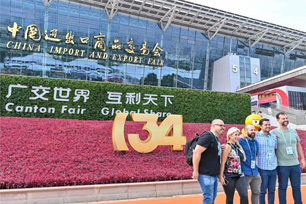With eye to major cities, Qianhai digs deep for hub
Editor's note: China Daily is publishing a series of reports on the Qianhai Shenzhen-Hong Kong Modern Service Industry Cooperation Zone in Shenzhen, which is a major part of the China (Guangdong) Pilot Free Trade Zone. The cooperation zone takes up 15 square kilometers of landfill in the Pearl River Delta region.
The Qianhai zone's underground development plan to create an 8-square-kilometer underground city recently received approval from a government assessment team. From 2004 to 2012, the cooperation zone labored to complete the massive reclamation project. It has been hailed by the administration authority of Qianhai as a model of how to improve land use efficiency.
According to the plan, about 1.3 square kilometers of underground space will be used for commerce, culture and entertainment while about 6 square kilometers will be used for transportation facilities and underground passages.
Authorities developing the underground plan learned a great deal from the success of international cities, including Chicago, London and Osaka, according to the planning and construction sector of the Qianhai administration authority.
For example, the city's planners studied the Chicago Pedway, a network of tunnels, ground-level concourses and bridges connecting skyscrapers, retail stores, hotels and train stations in Chicago's central business district.
The Pedway takes up about 2 sq km of space and the pedestrian walkways total about 8 km in length and link more than 40 downtown blocks and 50 commercial and government buildings. The system connects seven subway stations and public parking spaces.
Lin Hong, deputy director of the Qianhai administration authority, said the city's underground plan will be green.
"We introduce the latest planning philosophies and construction systems from around the world," he said.
Authorities predict that about 650,000 people will work in Qianhai while 150,000 people will live there by 2020.
They added that there will be a total length of 180 km of roads, 25 of which will be dedicated to walkways.
To facilitate the transportation of commuters, a subway hub for at least five subway routes will be built to connect the cooperation zone with other corners of the city, including the airport, railway stations and checkpoints to Hong Kong.
The idea of Qianhai's underground space is to encourage public transportation and walking so that vehicles and pedestrian walkways are separate, according to the planning and construction sector.
The administration authority of Qianhai has planned a spacious utility tunnel to account for all pipes, lines and cables for electricity, telecommunications, gas, water and other public utilities.
Although tunnels have been used for a century in many Western countries, they are not common in China. When utility services need maintenance, roads in most Chinese cities have to be dug out for repairs and covered like a zipper afterward.
The underground tunnel, which will be about 12 km in length, will be able to allow two jeeps to run through it, according to Qianhai administration authority.
"Although the costs are high, it could provide great convenience for maintenance and repair in the future," said Lin.
By Nov 18, about 55,300 companies had registered in Qianhai with an aggregate registered capital of more than 2.9 trillion yuan ($453.3 billion). About half of the companies were registered in 2015, which represented an increase of 158 percent from a year earlier.
chenhong@chinadaily.com.cn
(China Daily 12/02/2015 page10)



 Print
Print Mail
Mail

